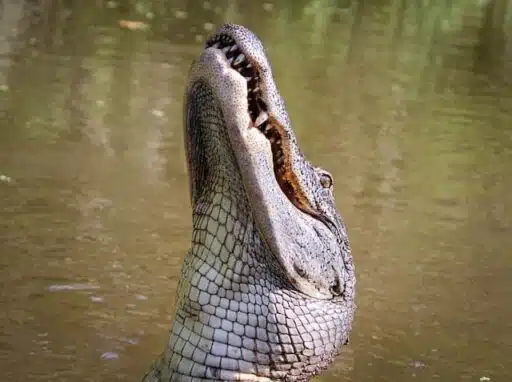When compared, the Alligator vs. Crocodile may both seem very similar, but some key differences exist. Alligators are native to North America, while crocodiles can be found worldwide! In this article we’ll deep-dive into their histories and all of their key differences.
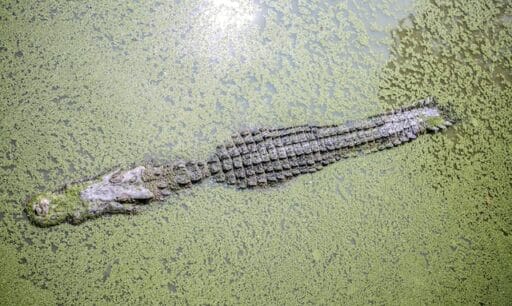
Alligators tend to be smaller than crocodiles, with a broader snout. Meanwhile crocodiles have a long and narrow snout. Alligators are typically greenish-black in color, while crocodiles can be greenish-brown, gray, or even orange.
However, these two giant reptile species diverge in many more aspects other than their physical differences. Read on to uncover all there is to know about each of them, and how they differ from each other! Here we go: Crocodile vs Alligator.
Origin Of Alligators
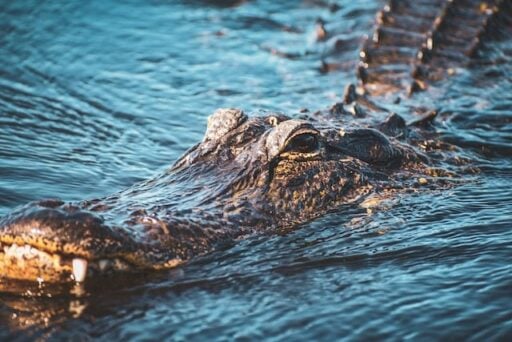
Alligators are often feared because of their size and power, but these animals have a long and fascinating history. Alligators first appeared on Earth almost 50 million years ago and are one of the oldest species still in existence today.
Unlike many other animals, alligators have changed very little throughout their evolution. It is probably because they already had a successful body plan that allowed them to thrive in their environment, thus there was no need to evolve further.
Alligators are apex predators and skilled hunters, using their powerful jaws to crush their prey.
Also, alligators have thick layers of skin that help to protect them from being injured by their prey. Today, alligators can be found in wetlands worldwide, and they play an important role in maintaining the balance of their ecosystems.
Origin Of Crocodiles
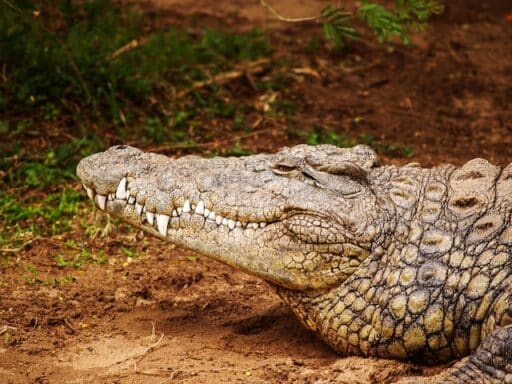
Crocodiles are the most iconic group of animals on Earth. While they may not look particularly different from their ancient ancestors, they have undergone a dramatic transformation throughout their evolutionary history.
They first appeared during the Late Triassic period, roughly 200 million years ago. At that time, the planet was inhabited by various strange and often fearsome creatures, including giant reptiles known as dinosaurs.
Crocodiles would have been relatively small and inconspicuous compared to their gigantic contemporaries. However, they soon began to diversify and evolve into the many different species we know today.
Over the ensuing millions of years, crocodiles have become some of the most successful predators on the planet, inhabiting every major continent except Antarctica. They have also come to occupy a wide range of different habitats, from rivers and lakes to swamps and marshes.
Thanks to their impressive adaptability, it is safe to say that crocodiles will continue to thrive for many years.
Read more about how crocodiles attack their prey in Newsweek.
Alligator Breeds
Alligators are large reptiles with long bodies, thick skin, and sharp teeth. There are two types of alligators:
- The American alligator
- The Chinese alligator
Alligators are fascinating creatures. The Chinese alligator is found only in China and nowhere else, which is one of the reasons it’s endangered. The American Alligator can be seen throughout the southeastern United States, where there is an abundance of these types on land and water!
They use their powerful tails for swimming and running. Similarily they are also good climbers and can even climb trees. Alligators are solitary animals that live in swamps, marshes, and rivers.
Would you swim with an alligator? Meet Casper the friendly alligator and his keeper.
Crocodiles Breeds
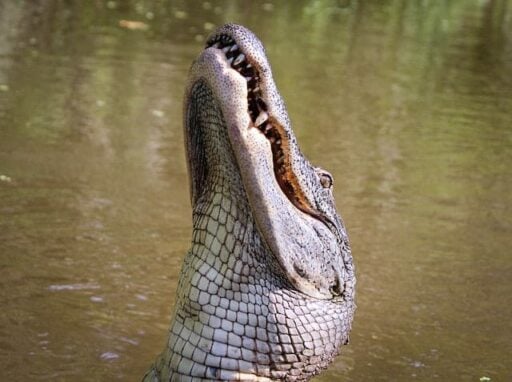
There are two main types of crocodiles:
- The New World crocodiles
- The Old World crocodiles
The New World crocodiles include the Caimans, native to Central and South America, and the crocodiles found in the southeastern United States. The Old World crocodiles include true crocodiles native to Africa, Asia, and Australasia.
Within these two broad categories, there are several different subspecies of crocodiles. For example, the New World Crocodile can be further divided into the gulf coast subspecies and the Florida subspecies.
Similarly, the Australian saltwater crocodile can be divided into three types: freshwater, estuarine, and marine.
Despite their reputation as fearsome predators, crocodiles are vulnerable to extinction. It is partly due to their slow reproductive cycle. Crocodiles take a long time to reach sexual maturity, and they only lay a small number of eggs at a time.
Crocodiles are known for their skin, which can be used in the production of leather goods. As a result of these factors, many species of crocodiles are currently endangered. Conservation efforts are underway in many parts of the world to protect these unique creatures.
Importance of Alligators and Crocodiles
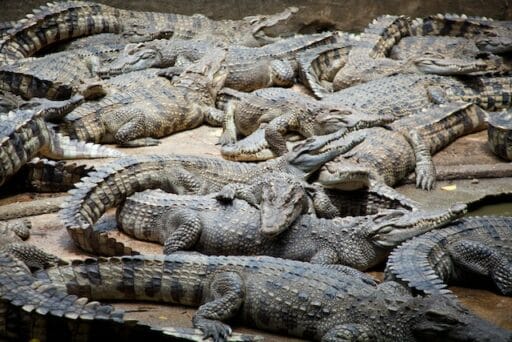
Alligators and crocodiles are often thought of as dangerous predators, and while it is true that they can be dangerous, there is more to these animals than meets the eye.
Both alligators and crocodiles are keystone species, meaning they play an important role in their ecosystems. For example, alligators help keep certain fish populations in check, which helps maintain the health of wetlands.
Crocodiles likewise play an important role in their ecosystems, serving as predators and prey. In addition, both alligators and crocodiles are popular tourist attractions, which can bring much-needed revenue to local communities.
As a result, alligators and crocodiles are vital to the health of their ecosystems and the economies of the regions where they live.
Comparison Chart: Crocodile vs Alligator
| Features | Alligator | Crocodile |
| Size | Alligators are typically smaller and lighter than Crocodiles. | Crocodiles are typically larger than Alligators. |
| Weight | 500 to 1000 pounds | 800 to 1000+ pounds |
| Snout | Alligators have a broader, U-shaped snout | Crocodiles have a narrower, V-shaped snout. |
| Sates | Alligators are found in the southeastern United States. | Crocodiles are found in tropical regions worldwide, i.e., Africa, Asia, and Australia. |
| Teeth | Alligators have much smaller teeth, which are not visible when their mouths are closed. | Crocodiles have lightly curved teeth on both sides of their jaws, from which five bottom teeth are visible. |
| Color | Alligators have darker coloration. | Crocodiles tend to be more tan or gray. |
Differences: Alligator vs Crocodile
Alligators and crocodiles may seem very similar at first glance, but the two animals have loads of differences.
For example, alligator bodies tend to be shorter with broader heads, while their teeth are more serrated than those in crocs’ mouths. Alligators also lack outer toes on each foot, as some species do!
Let’s delve further into the key differences between alligator vs. crocodile:
#1 Different Hues of Skin Color
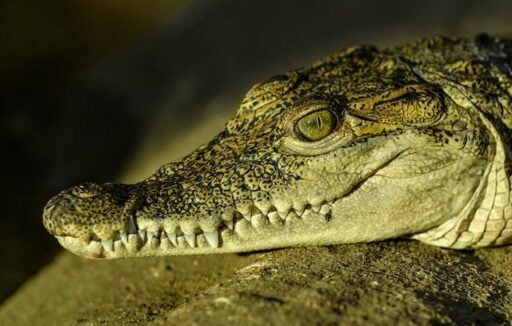
Color can be a quick way of differentiating between crocodiles and alligators. Crocodile species tend to have darker colors, with green being one of their most common hues.
American crocodiles (which live in warm waters) are often slate gray or white underneath – this provides them protection against predators since light doesn’t penetrate very far underwater!
On top of physical hiding tactics like coloration for concealment purposes, some also employ an interesting strategy called countershading. This makes these creatures look clumsy when moved into sunlight but sleek if seen at night.
#2 Difference in Size
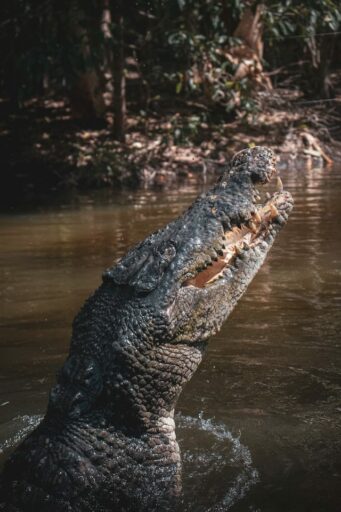
Both crocodiles and alligators are large reptilian predators with long snouts and sharp teeth. However, Crocodiles tend to be much larger than alligators, with the average Crocodile measuring between 15 and 20 feet in length.
Alligators and crocodiles may look alike, but they’re quite different creatures. Alligator snouts are shorter and broader, while their crocodile counterparts have long, narrow prominences that stick out from the mouth like an extended tongue.
So you can see how these two species could never be mistaken for each other!
#3 U-Shaped Snout vs V-Shaped Snout
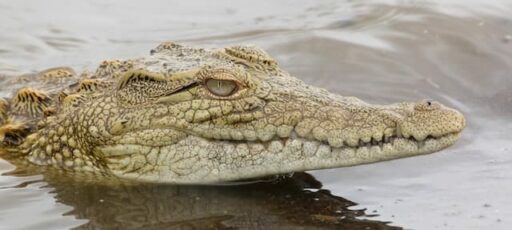
Alligators and crocodiles may look similar, but there are a few key ways to tell them apart. One of the most obvious is their snouts. Alligators have much broader, U-shaped snouts, while crocodiles have narrower, V-shaped snouts.
This difference is due to the different shapes of their teeth. Alligators have teeth that are round and blunt, while crocodiles have teeth that are sharp and pointed. The shape of their snouts also affects the way these animals hunt.
Alligators use their broad snouts to sweep through the water, hoping to surprise their prey. Crocodiles, on the other hand, use their narrow snouts to snap at fish swimming by.
#4 Teeth Appearance
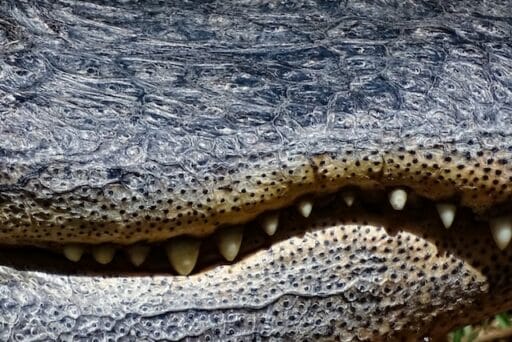
Crocodiles have a large number of sharper teeth, better adapted for slicing flesh. Alligators have fewer, blunter teeth that are better suited for crushing bone. This difference is reflected in their respective bites.
The difference in bite force between crocodiles and alligators is a major factor in their diet. Crocodile teeth are sharper, allowing them to feed on meat that contains more minerals.
#5 Body Structure
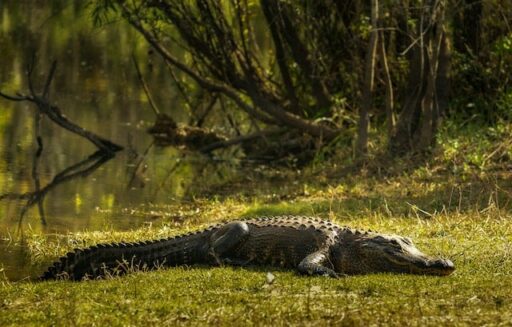
Crocodiles and alligators both have dome pressure receptors on their skin.
These specialized cells, which are placed at the tips of each digit, allow for exquisite sensitivity when detecting ripples or changes within the water level. They also help these animals regulate how much salt is leaving the body through sweat (which occurs more so during warm weather).
The gators’ larger surface area allows them greater control over regulating fluids while swimming – a trait that comes in handy, especially near coastal areas where high salinity waters exist!
#6 Different Native Regions
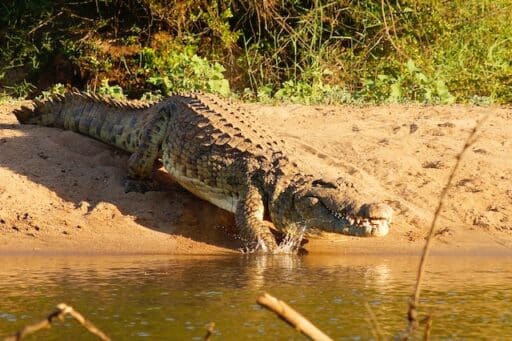
Alligators are native to the United States, while crocodiles are native to Africa, Australia, and South America. Alligators are typically found in freshwater environments, such as ponds, lakes, and rivers.
Crocodiles are found in more states than alligators because they tolerate lower temperatures. The American Crocodile thrives from 85-93 degrees Fahrenheit, but this is not the case for their counterparts across the oceans in India, where they reside in waters that measure around 78 ° F or less!
#7 Difference in Nature
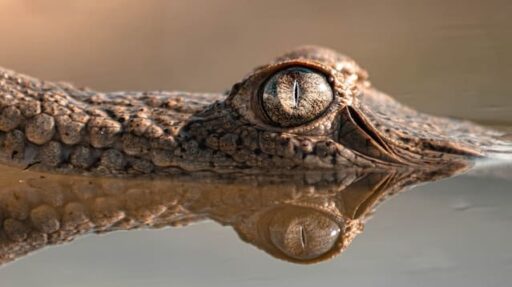
Alligators are shy by nature, while crocodiles are aggressive and territorial. Crocodiles often attack and eat other animals, including fish, birds, and mammals. They have even been known to kill humans.
Alligators are known to attack humans only when they feel threatened. Both alligators and crocodiles have sharp teeth that are perfect for tearing meat, but their jaws can easily break if they clamp down on something too hard.
#8 Eating Habits
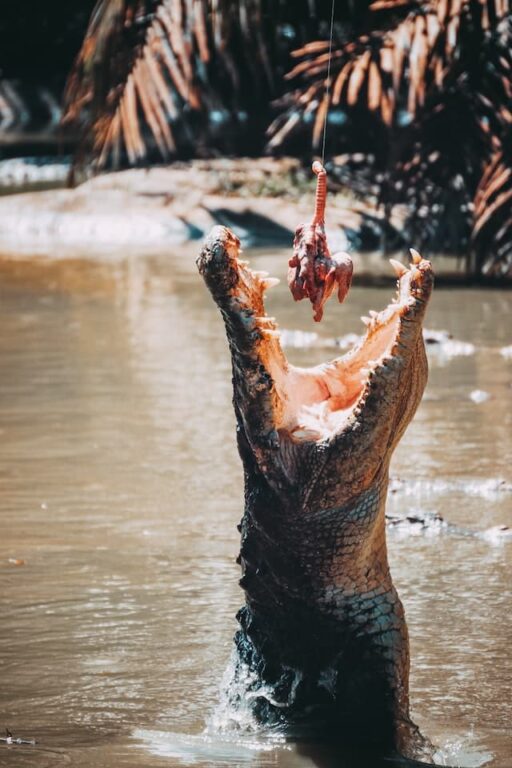
Alligators and crocodiles are opportunistic predators, meaning they eat whatever prey is available.
Alligators are carnivores, and their diet consists mainly of fish, birds, and small mammals. They have very sharp teeth that are perfect for slicing through meat.
Crocodiles are also carnivores, and their diet is similar to alligators. They eat mostly fish but also reptiles and mammals. Both alligators and crocodiles have powerful jaws that can crush bone.
These animals typically hunt alone, although they have been known to cooperate to take down large prey. Ultimately, these reptiles are fierce predators that consume anything they can come across.
#9 Incubation of Eggs
Alligator eggs incubate for about 60 days, while crocodile eggs incubate for about 90 days. This is so because crocodiles are a larger species and need more time to develop.
The temperature of the eggs also affects the incubation period; if it is too hot, the eggs will hatch early, and if it is too cold, the eggs will not hatch at all.
#10 Not as Closely Related As One Would Think
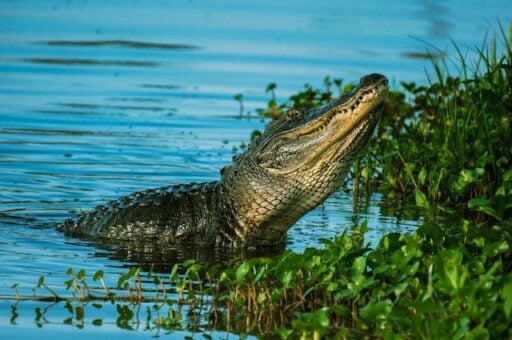
Both Crocodiles and Alligators belong to orders that include caimans, but they don’t have anything else in common besides their membership within this grouping!
Alligatoridae includes both gharials (a kind species) and Americanisms which can be found across Asia Pacific countries such as India or Indonesia.
These creatures look differently depending on where they live; one has eyes like rubies, while another appears green-colored due to its spotted coat coloration.
Are Alligators and Crocodiles in Danger of Becoming Extinct?
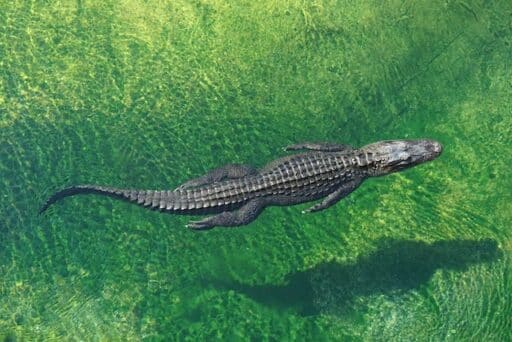
Alligators and crocodiles are now in danger of disappearing and are at risk due to habitat loss, pollution, and hunting. In terms of this there is no difference between the crocodile vs alligator.
These two species, alligators and crocodiles, play an important role in their ecosystems, and their loss would have a ripple effect on the animals that depend on them.
For example, alligators help to keep the population of snakes in check, which can, in turn, help to control the spread of disease.
In addition, alligators and crocodiles are major food sources for many other animals. As top predators, they help to balance the food chain and keep populations of other animals in check. The loss of these animals would have a devastating impact on the delicate balance of nature.
We must take action to protect alligators and crocodiles. We can start by raising awareness about their threats and working to protect their habitats.
Also, we must not pollute their environment or hunt them for their skin or meat. If we work and act now, we can ensure that these fascinating creatures will be around for millions of years to come.
Role of Alligators and Crocodiles in the Ecosystem
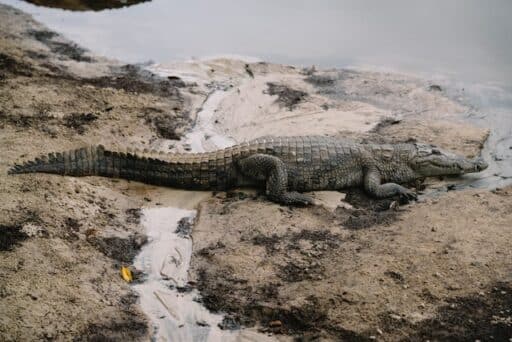
Alligators and crocodiles play an important role in their ecosystems. As top predators, they help keep populations of other animals in check, preventing species from becoming too abundant.
It helps to maintain the delicate balance of the food web and ensure that all animals have enough to eat. Alligators and crocodiles also play an important role in decomposition. By eating dead animals, these creatures help to break down organic matter and return nutrients to the soil.
In this way, they play a vital role in their ecosystems’ cycle of life and death. As such, it is clear that these ancient reptiles play an essential role in keeping their ecosystems healthy and thriving.
Are Alligators and Crocodiles Dangerous to Humans?
When most people think of alligators and crocodiles, they probably envision a large reptile tanning on a river bank or floating lazily in the water. While these creatures may seem harmless, they can be quite dangerous.
Alligators and crocodiles start the food chain, which makes them apex predators, and they have few natural predators. As a result, they have little fear of humans and will attack if they feel threatened.
Moreover, both animals are equipped with sharp teeth and powerful jaws that can cause serious injury to human beings. They also have long tails that can deliver a powerful blow.
Given their size and strength, it is not surprising that alligators and crocodiles are responsible for numerous human deaths each year.
While these animals may be fascinating to watch from a distance, it is important to remember that they are wild creatures.
How to Choose Between Alligator and Crocodile as a Pet?
Suppose you’re trying to decide whether an alligator vs crocodile would make a better pet after being fascinated by their incredible bodies and abilities. Both animals are large and potentially dangerous, requiring much space and specialized care.
Alligators are generally less aggressive than crocodiles but are also less trainable. Crocodiles tend to be more intelligent and can be trained to perform tricks, but they can also be very aggressive.
You’ll also need to consider which type of climate you live in, as alligators do best in warm weather, while crocodiles prefer cooler temperatures. Ultimately, your best pet will depend on your preferences and lifestyle.
The Final Verdict on Alligator vs Crocodile
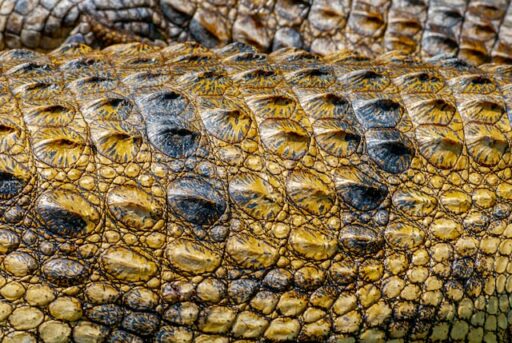
So there you have it – the crocodile vs. alligator. Two apex predators that inhabit different parts of the world and yet are surprisingly similar in many ways. Both animals are ambush hunters with keen eyesight and powerful jaws.
They are both incredibly well-adapted to their environments and can live for decades. However, a few key differences between these two reptiles set them apart. So after having read this, which one would you rather encounter on a nature hike?
Thank you for reading this article about the crocodile vs alligator! If you want to see these amazing creatures in real life, head over to read our post on Where to See Crocodiles in the Wild and Watch: Alligators Chilling (Literally) in North Carolina.
- The Most Adorable Footage of Baby Wolves in Minnesota - April 15, 2024
- Man Teaches Bald Eagle to Play Fetch - April 15, 2024
- Mother Buffalo Tries to Save Baby From Komodo Dragons - April 14, 2024

